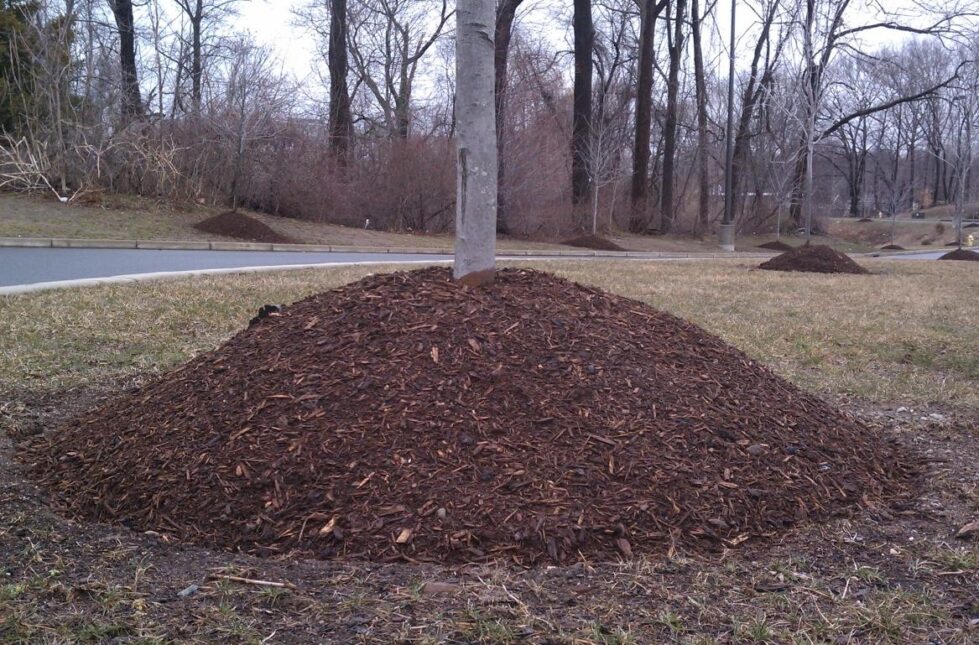Whether you take care of your own property, or someone maintains it for you, common mistakes occur frequently in the landscape. Learn to avoid these landscape mistakes and save yourself time, money, and frustration!
Landscape Mistake #1: Trees planted too deeply
Like other living things, woody plants are comprised of different types of tissue which perform different functions. Bark tissue protects the plant and transports nutrients between the roots and the leaves. Root tissue absorbs water and nutrients from the soil. These tissues meet at a point where the trunk starts to widen. Identify this point, called the root flare, and plant it at or slightly above ground level.
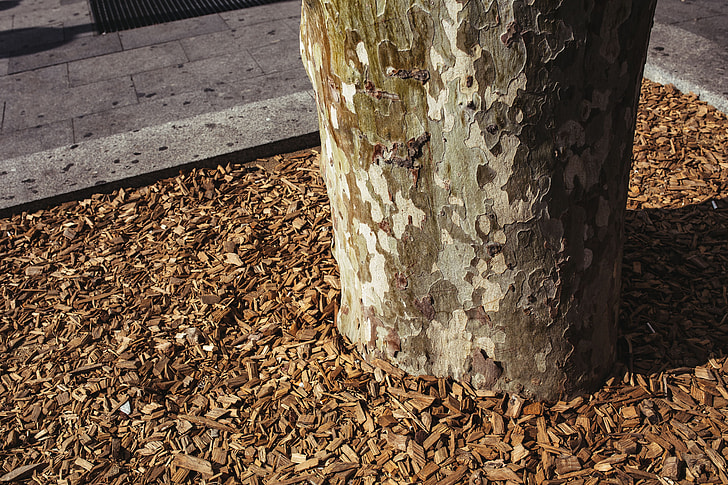
Frequently when you purchase a plant, this root flare has been covered by soil, either in the pot, or in the digging process in the nursery. If you skip identifying the root flare and the tree is planted too low, it will weaken and eventually die. We call this telephone poling in the industry, because the tree looks like a telephone pole stuck into the ground. Compare this to trees that grow naturally where you will always see the root flare. For more information on proper planting height and technique, visit Purdue University’s ‘Tree’s Need A Proper Start- Plant Them Right!’.
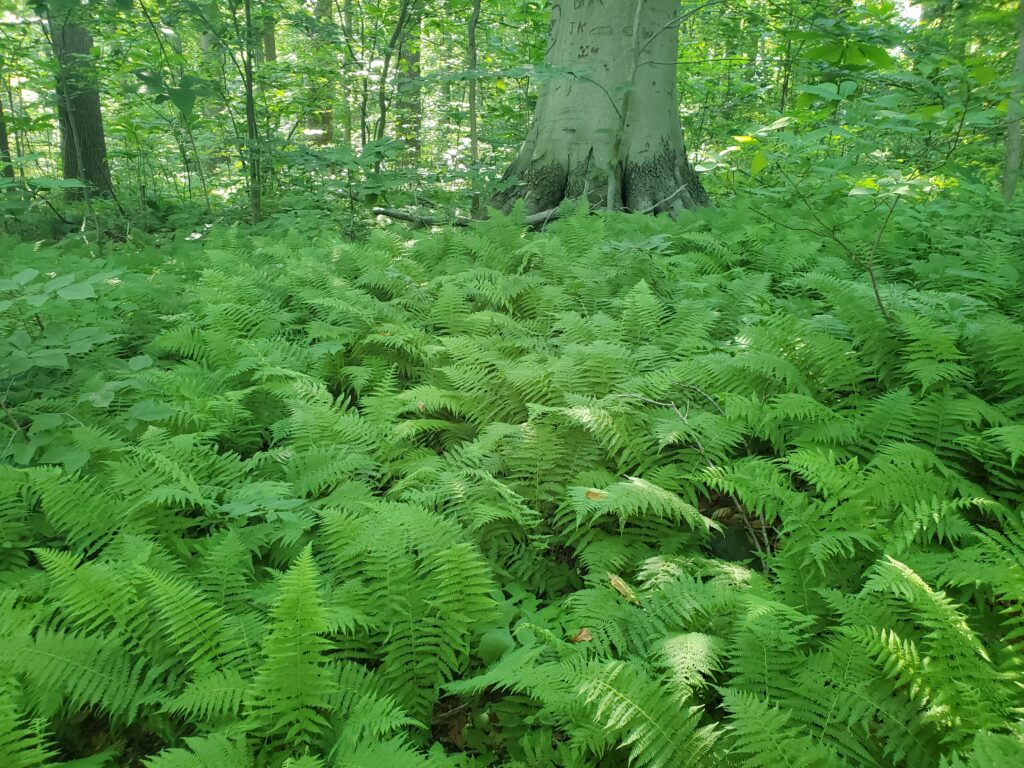
Landscape Mistake #2: Mulch volcanoes
Mulch suppresses weeds, retains moisture in the soil, and reduces erosion. Initial plant installations require up to 3 inches of mulch in order to cover the soil. Additional applications of mulch should be approximately 1 inch, or just enough to break down in a one year cycle. Too much mulch is not only an unnecessary expense, it affects woody plants in the same manner as planting them too deeply, so never apply mulch up against a tree’s bark.
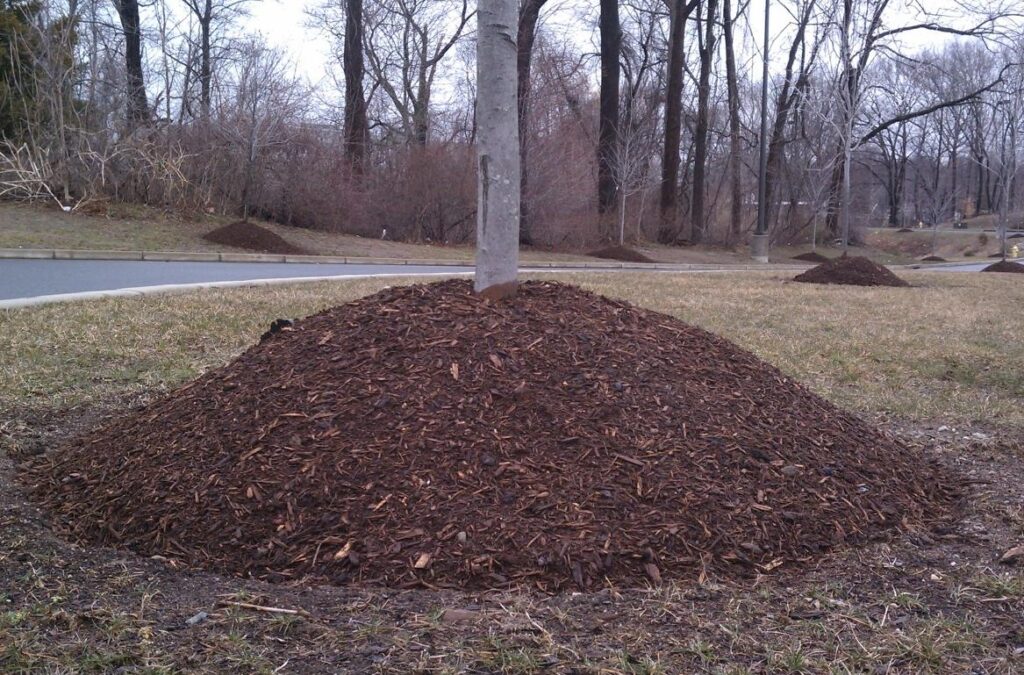
We call these piles of mulch around trees mulch volcanoes. I have no idea how this trend started, but it is not a sound horticultural practice. Make sure your mulch is not too thick, and spend that money elsewhere. Or better yet, use leaves for mulch, and skip that expense altogether.
Landscape Mistake #3: Tree abuse
Trees are living things, and if cared for properly, they will live for a long time. That is why it is important to care for them. Damage to the bark of a tree can shorten the tree’s life. Likewise, poor pruning can turn a beautiful tree into an eyesore for years to come.
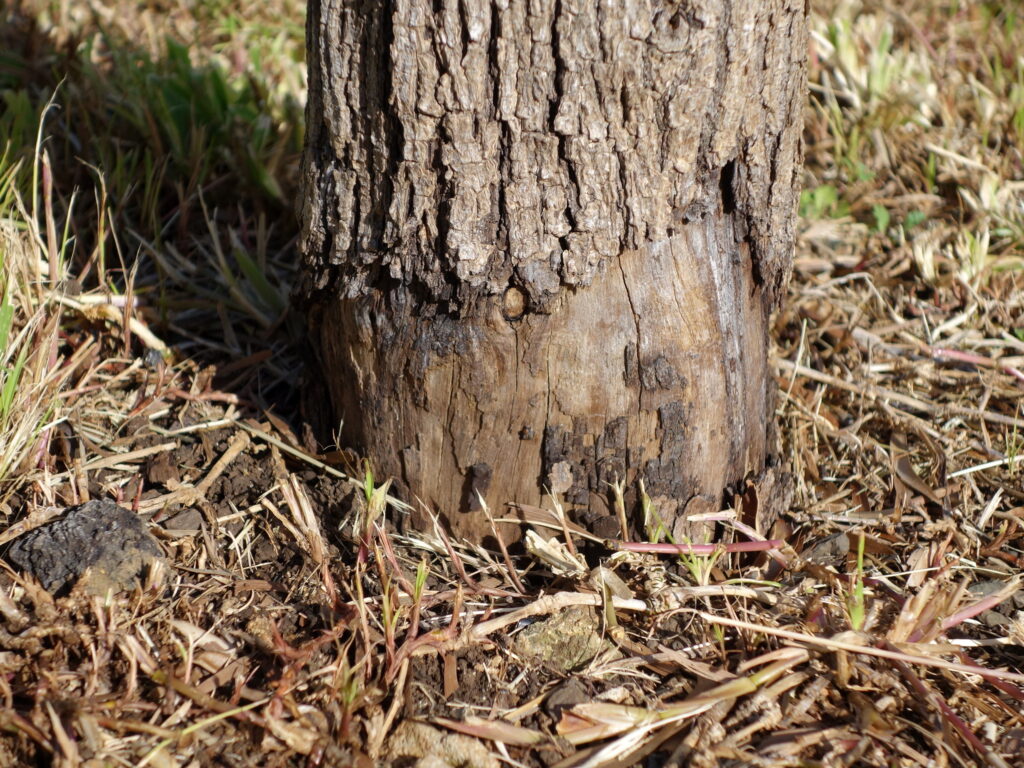
Power equipment is often the cause of tree injury, so keep mowers and line trimmers away from the trunks of trees. This mechanical damage is permanent, so create beds under trees instead of growing grass. Fill these beds with shade perennials, and trees will remain beautiful and damage free for years to come.
If pruning needs to be done due to low branches or a tree growing too close to a building, prune properly! If you are not sure of proper pruning techniques, hire a certified arborist. The International Society of Arboriculture (ISA) has a listing of all certified arborists in your area.
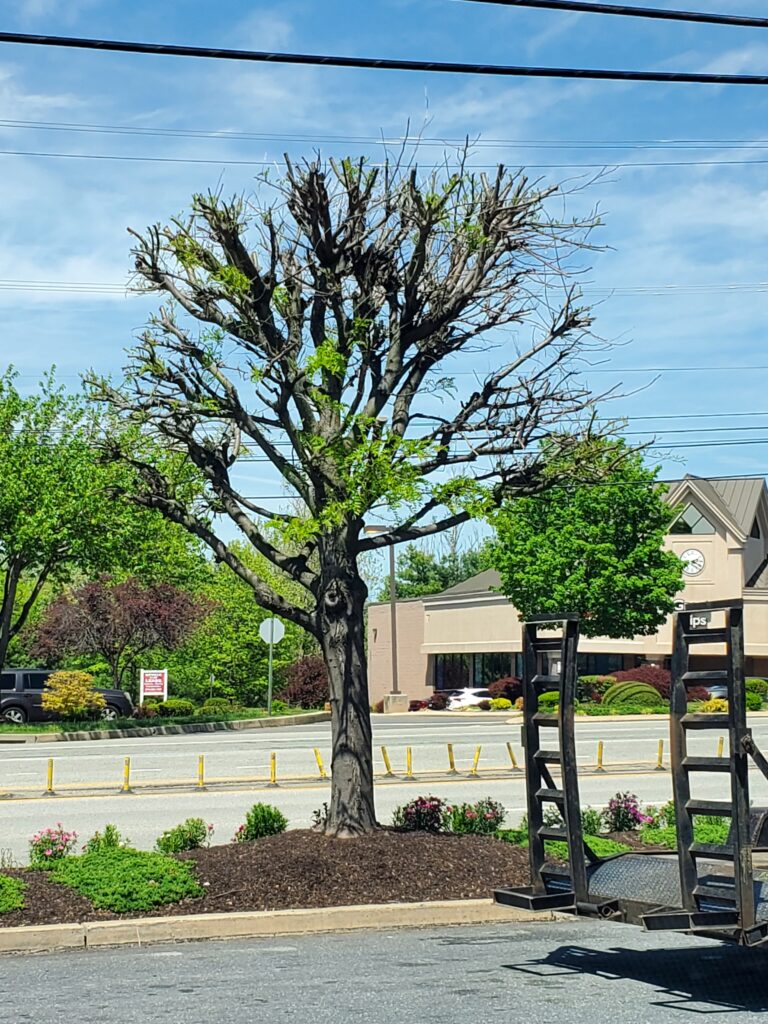
Landscape Mistake #4: Poor plant selection
Another common mistake is choosing the wrong plant for a site. Always select plants for size, placement, and culture.
It is easy to find large shrubs planted directly under windows and next to sidewalks in front of houses. This may look nice when the plants go in the ground, but many of these shrubs can ultimately grow 10’ tall and as wide in just a few years. Consider the mature size of plants if you do not want to become a slave to pruning. Choose dwarf varieties, and place plants where they have plenty of room to grow for a long-term successful landscape.

Culture is also critical when selecting plants. Take clues from where plants grow in nature. For example, Rhododendrons always grow in well drained soil, mostly as an understory plant in the shade. So they will never be happy in clay soil in full sun. On the other hand, many hollies and magnolias grow naturally in wetter soils along streams. So if you have clay soil, they may do well in your spot.
Landscape Mistake #5: Not Enough Plants
People often think plant beds require a lot of maintenance, but the opposite can be true. Reducing turf and filling beds with desirable plants is good for both people and the environment. Full beds provide habitat for wildlife and pollinators, absorb storm water, out-compete weeds, and create beautiful places for people to enjoy.
Plant beds without enough plants will continually be invaded by weeds and require annual applications of mulch. So fill your landscape with plants and over time, you can skip the mulch altogether!

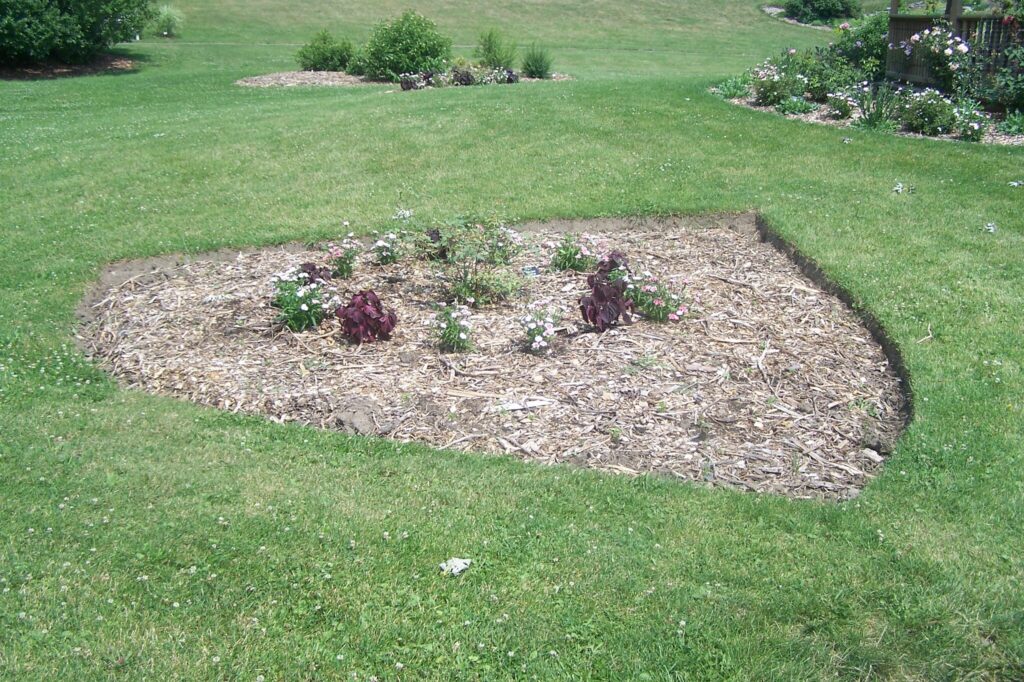
Let’s face it, landscaping can be both expensive and labor intensive. To minimize the expense and effort, and to maximize the successes and the enjoyment of your landscape, do your homework, and learn from the mistakes of others. And as always, if you need help, contact GreenWeaver!

